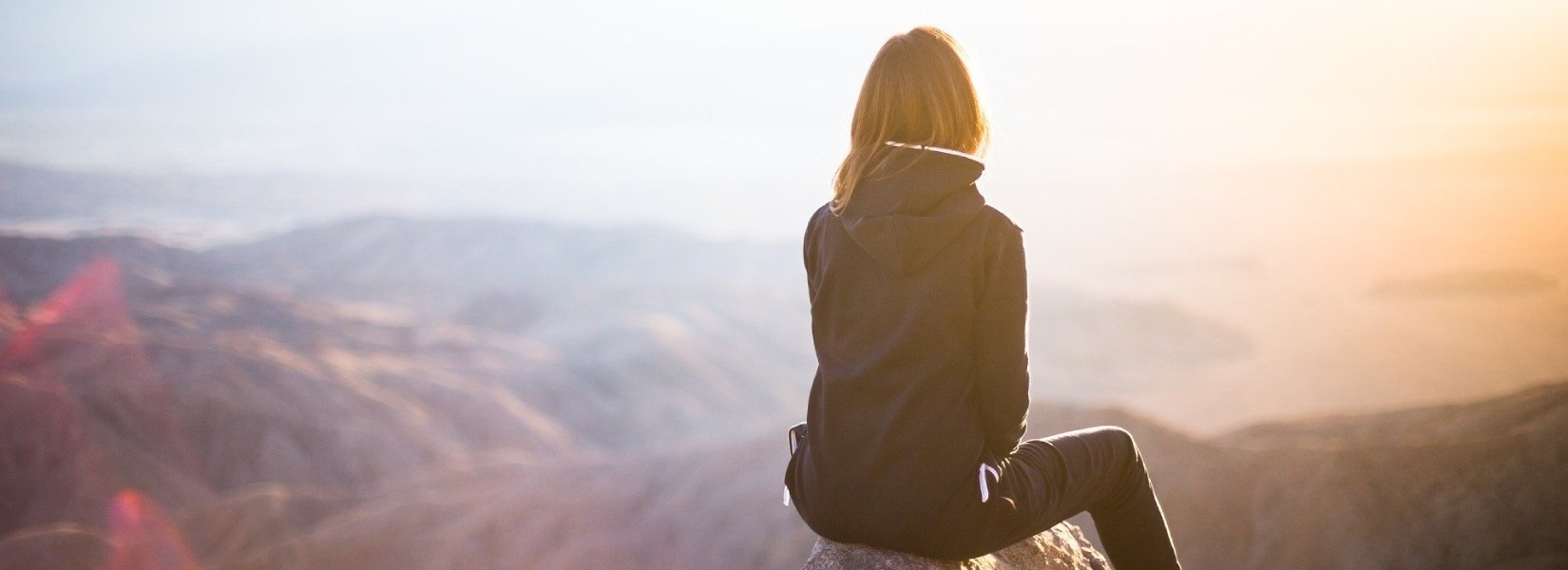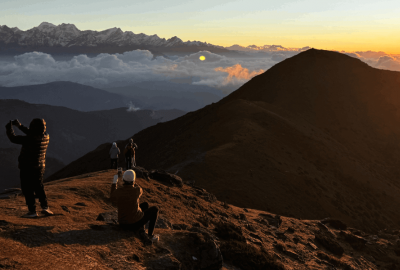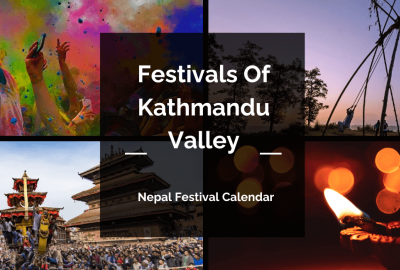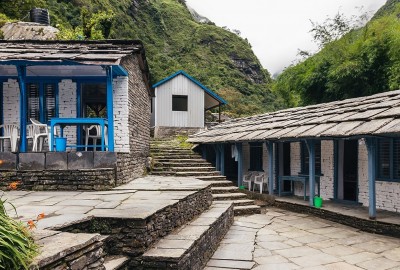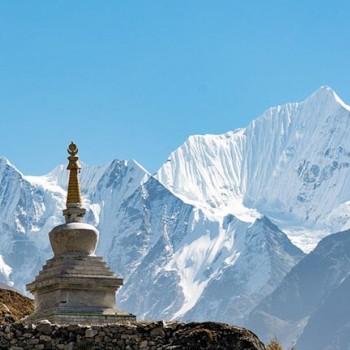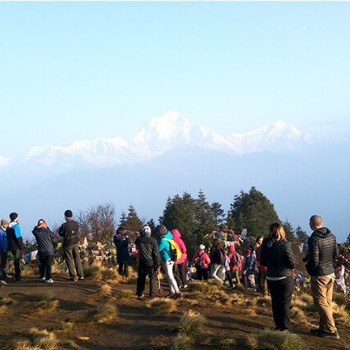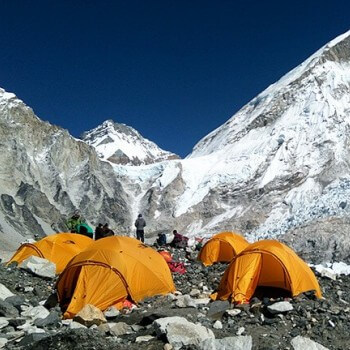Staying Safe in Nepal While Traveling Alone
There are plenty of guesthouses and hotels that have accommodations no matter the budget range. There have been incidents where solo travelers have had issues in local homes. While the issues are not regular issues, things like sexual advancement, monetary issues, and emotional blackmail have happened in the past.
While commercial homestays are gaining popularity in Nepal, behind the scenes they are often run by tour companies. While the crime rate is essentially low in Nepal, the rate of bag snatching has risen at night in Thamel and along the lakeside in Pokhara. While there is no need to be paranoid, you should keep your valuables close to you.
Trekking Solo as a Woman
It is important that you do not be lulled into a false sense of security in Nepal if you have never been trekking before. If it is your first trek, it is advisable that you take a guide no matter your gender. And if you have been trekking elsewhere or in Nepal, you should still remember that solo trekkers go missing every year. And in the past, there have been attacks and murders of female solo trekkers although they are exceptions. But because of the cases in the past, you should keep it in mind. The clothes you wear during the trek need to be non-revealing and respectful.
It is frowned upon if you were skin-tight clothes while trekking as it is generally not accepted in the Nepali culture. Loose-fitting clothes are more favored when trekking. Choosing the right guide to trek with is an important part while planning the trek, especially if you plan on traveling solo. So, you should meet a ton of travel guides from different travel agencies before you choose someone you feel 100% comfortable with.
You should also not be scared to ask for references, points of contact, your itinerary, and take a photograph of your guides to face. You should also tell them that you are sending it to your family and a friend here in Nepal. While you do not necessarily need to be harsh as you are going to be traveling with them, you should make it a friendly conversation but still let them know that if anything goes wrong then there are people who know where you are going and who you are with.
Best Time For Solo Travellers
Every season offers unique features while Trekking in Nepal and Nepal does have tourists travel here all year round. Despite that, the most ideal season to visit and trek in Nepal will be during Spring and Autumn and the best months for trekking here are May and October. The main reasons for this are that during these times, the weather will be clear and the views of the mountains will not be veiled by clouds. During these times, the rhododendrons will be in full bloom and you will get to witness them.
As this is the best time to trek, there will be a high number of trekkers during these months and seasons. You will most likely meet people who share similar tastes with you. A major benefit is that in case you manage to get yourself in trouble, as there will be people milling about you are more likely to find help more easily. Pre-booking is important as it is the peak season. Compared to offseasons, the accommodation, travel costs and food will be high.
Permits for Solo Trekking in Nepal
For every trekker who wishes to trek in Nepal, the TIMS card ( Trekkers Information Management System) is compulsory as without it you will be rejected. For solo travelers, green TIMS cards are issued while group travelers will get blue TIMS cards. If you plan on trekking through conservation areas then you will need a conservation area permit. Both of the permits that you require can be gained from Kathmandu.
The permit cost for solo travelers is slightly more expensive as you will have no one to divide the cost with. The permits for trekking in restricted areas are not handed out to solo travelers. To gain restricted area permits, there needs to be at least 2 people excluding the guide.
9 Useful Tips For Solo Trekking
- You should pack all the items you will require and choose a safe season with good weather conditions.
- Despite being physically fit and having previous trekking experience, there is a possibility of altitude sickness. You should know about the diseases related to high altitude and in case of any symptoms, you should immediately seek help.
- A great safety precaution is to inform someone you trust who is near you about the places you are going to be staying at and where you are going.
- You should pick a trekking destination that can be reached comfortably in time with the trails. Also, it is not recommended to trek after dark for solo travelers.
- You should get travel insurance that covers foreign countries too and one that offers rescue and emergency evacuation.
- As there are no ATMs in remote trails, you should carry enough Nepali Cash so that it will cover you for your entire trip. And while there are few regions with ATM facilities available, they are not reliable at all times. So, it is recommended that you carry cash with you.
- You should also walk along the trekking route of your destination and not take any unnecessary risks, especially when you are traveling solo.
- It is important to walk slowly and take the necessary breaks that you require. You should not push your body beyond its limits and to stay hydrated, you should drink plenty of water which will reduce the risk of AMS (Acute Mountain Sickness).
- Unplanned situations like delays and injuries might happen, you should also remember to keep a few extra days.
Top 3 Places Where Solo Travels To
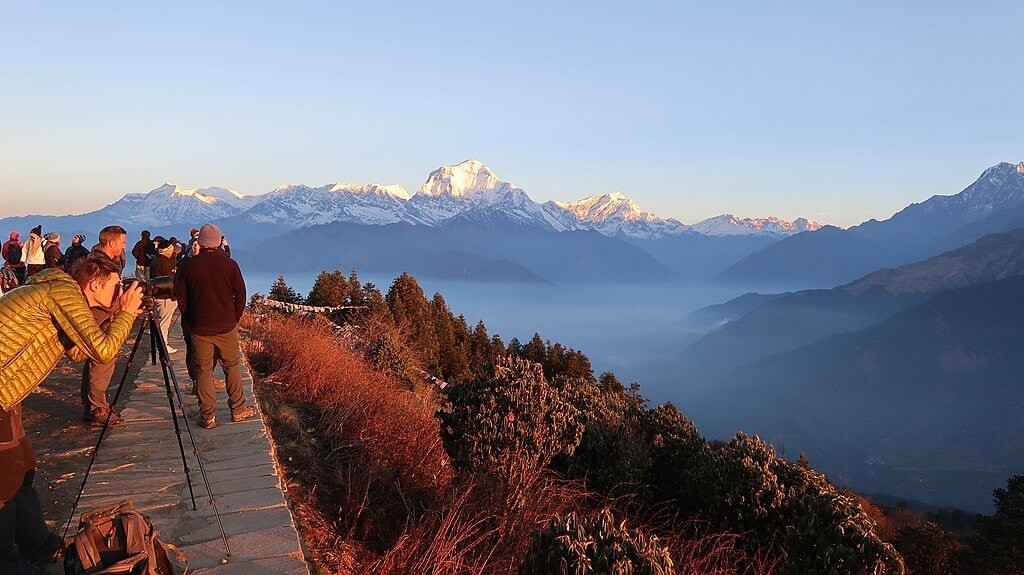
While it is possible to do the Ghorepani Poon Hill trek alone, it is recommended that you take a guide along with you if you are a first-time trekker. Having a guide and a porter is a good way to support the locals and they can be worthwhile but they are an option and you can opt-out of hiring one. It is pretty difficult to get lost in Poon Hill as it is a well-marked trail.
The first step to getting ready is to get your permits. For Poon Hill, you will require two separate permits. One is the Annapurna Conservation Area Project (ACAP) permit and the other is the Trekker’s Information Management System (TIMS) permit. The ACAP permit is your entrance fee while the TIMS permit helps the authorities to keep everyone safe and keep track of trekkers. You can get both of these permits in the Nepal Tourism Board’s office in the Damside area in Pokhara.
In Kathmandu, you can get your ACAP permit in the Nepal Tourism Board office in Bhrikutimandap and you can get your TIMS permit in Tourism Service Center or in Trekking Agencies’ Association Nepal (TAAN) located in Maligaon. You will need your passport, cash, and a passport photo for each of the permits. Each permit costs Rs 2000 for solo travelers and lesser for citizens from SAARC countries. If you are going with a guide from a travel agency, they will acquire the permits for you.
Nayapul is located to the west of Pokhara and is approximately 43 kilometers away from it. The easiest way to get there is to take a taxi or travel on a public bus. The price of the taxi ranges typically between NPR 2000-3000. The buses are significantly cheaper compared to taxis. The bus ticket costs around NPR 150. While the taxis will take you there in roughly 90 minutes, the buses will take longer and get you there in over 2 hours. You can get a bus to Nayapul from Baglung Bus Park. The buses to Nayapul leave every 30 minutes and you can find buses from 5:30 am to 3:30 pm. While there is a significant difference in price, the taxis are much more comfortable than the buses but it depends on you and the method of traveling you prefer.
After reaching Nayapul, you should register at the TIMS checkpoint and then follow the trail up to Birenthanti. The ACAP checkpoint is located inside the Annapurna Conservation Area. You should make sure that you register at both checkpoints. To start your trek, you simply follow the trail after the ACAP checkpoint.
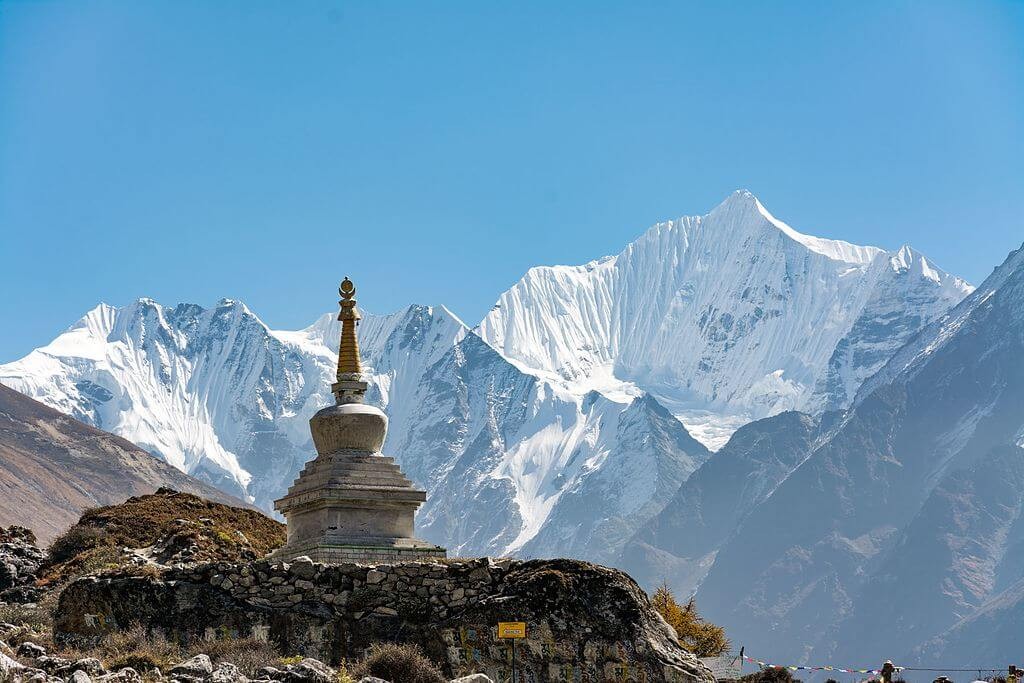
While Langtang Valley Trek is one of the easier treks in the Himalayas, it is going to put your physical fortitude to test. Located at an altitude of 1460 meters is the small mountain town of Syabrubesi which is where your trek will begin. Throughout this trial, you will trek alongside the Langtang river as the trail gains altitude and leads you up to large rocky steps and through thick forest. Above the treeline, the landscape is dominated by Buddhist prayer walls, snow-capped mountain peaks, and Buddhist prayer walls.
While the temperature will drop significantly, the guesthouses offer warm black coffee, hot food, and cozy beds. The last point for many trekkers is Kyanjin Gompa in Langtang Valley. Kyanjin Gompa is a delightful town located at 3,870 meters and made up of a bakery, several guesthouses and a shop that sells freshly made yak cheese. When traveling solo, very quickly trekking costs can add up. If you pre-plan everything and follow the management of the expenses you have prepared then you can complete the whole trek in less than USD 200.
Your trekking will start after your arrival in Kathmandu. The Thamel district of Kathmandu is known as the tourist area and here you can find many accommodations, gear rental shops, and trekking agencies. It takes about 20 minutes to get to Thamel from the airport by taxi but you can also take a public bus till Ratnapark and then walk from there to Thamel.
For Traveling solo, it is recommended that you hire a guide but you can make do without one. If you are on a strict budget then it is probably better if you do not travel solo and wait a bit until you have enough budget to trek. As the entire trail follows the Langtang river, it is nearly impossible to make a wrong turn. On day one, you will come across the only one unmarked fork in the trail. While the right fork leads you over the ridgeline to Lake Gosaikunda, the left follows the river.
For this trek, you will need 2 permits. One is the Trekker’s Information Management System (TIMS) which is a card that has your important information like your itinerary, emergency contact, trekking route, and plans. Along the way, you will have to present this card at checkpoints as it is used for your safety. Another permit you need is the National Park permit. Both the permits can be acquired from Nepal Tourism Board located in Kathmandu. The TIMS permit costs NPR 2,000 for solo trekkers without a guide and the Langtang National Park Permit costs NPR 3,390.
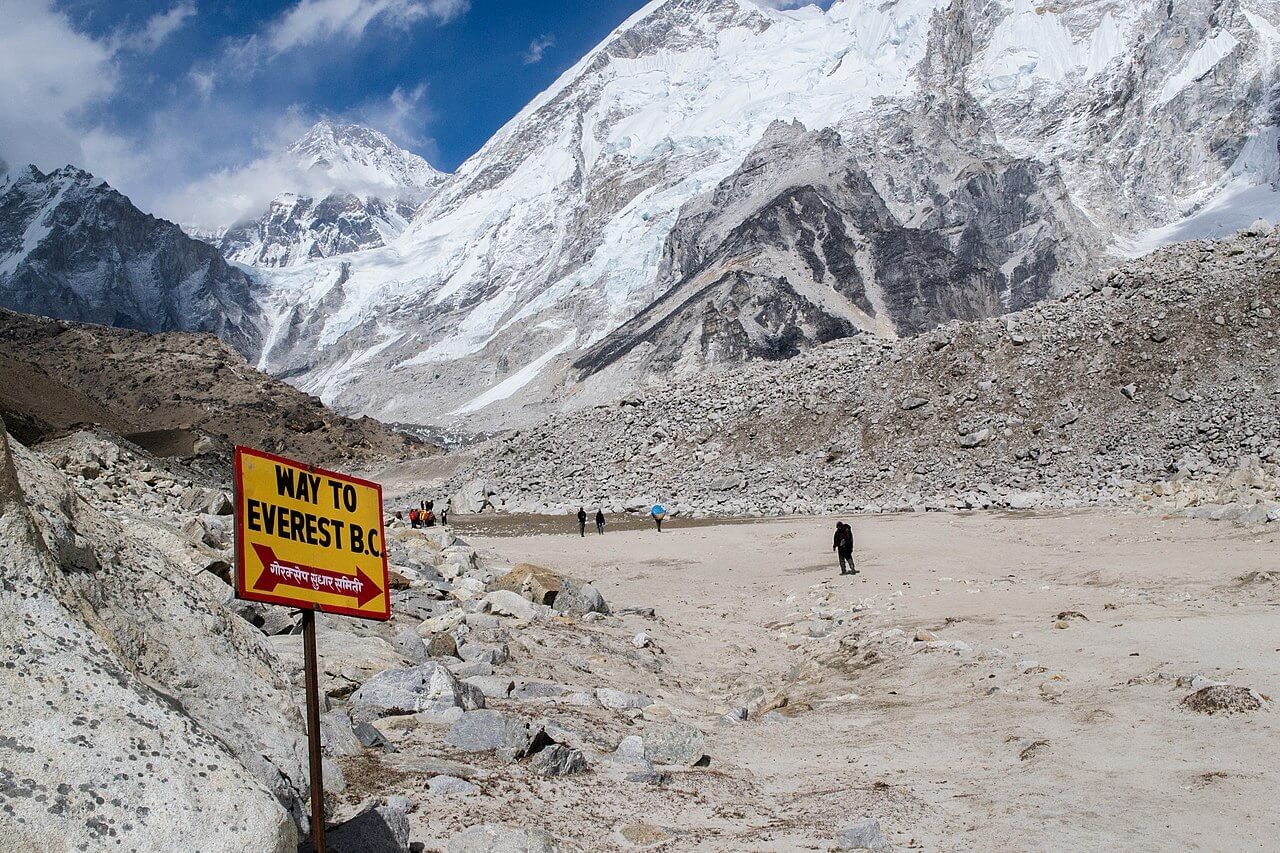
While traveling solo to Everest Base Camp is not recommended, it is possible to do it. You can trek to Everest Base camp by yourself by carrying all the necessary equipment you will need in your bag like trekking socks, water bottles, light snacks, trekking poles, etc. The things that you must not forget are a map and a compass so you can get a proper sense of direction. You can pack all the necessities and trek to base camp as an independent trekker but it will lead to certain problems such as difficulty in finding accommodations and food.
Taking a guide is essential for higher altitudes as at higher altitudes, there is a chance of getting altitude sickness. You might also get problems with vertigo and other mountain difficulties, during that time you will need someone to take care of you and if there is no guide or another companion with you, you will end up alone. Also, during the trek, you will not be able to know the names of the mountains, fauna, and flora of that region. To know about them, you will have to consult the locals at each point.
On the bright side, trekking is about finding peace by emerging oneself in nature and exploring natural environments that you will be able to do on this trek as you will be trekking alone. You will not have to follow a strict schedule and can move at your own pace. Without the restrictions of anyone, you will be able to spend lots of time in the lap of Himalayas. But on the downside, the main disadvantage might be the difficulty in communication. Also when you are trekking alone, people will take advantage of you and overcharge you for things. The risk of taking a wrong turn or going on a completely different area is also there. For female solo travelers, the main problem that may arise is harassment from local boys or foreigners.
Trekking alone is a lot more expensive than traveling in a group. You will have to pay for flight tickets, lodging, food, and all the other necessary stuff by yourself. Some of the things you will need to spend your money on are the cost of flight, permits, TIMS permit, local government permit, guide and porter and your accommodations and food per day.
You will also need to bring all of the stuff you will need by yourself. 25 kilograms is the average recommended weight that once can carry. If you carry less stuff then it will be easier for you to manage. But you should bring essential stuff like a fleece jacket, trekking shirt, breathable underwear, trekking trousers and shorts, water bottles, base layers, insulated jacket, sun protection glasses, hats, lip balm, lotions, a first aid kit and many more.
While trekking alone you will face tons of problems so taking a guide or porter or going in a group is more beneficial. Traveling in a group provides more security and gives lesser burdens about the essential stuff. Traveling with a guide or porter helps you to gain knowledge about the forests, mountains, flora, and fauna. And while there is no certainty that you will get sick, if you do manage to get sick then your companions will use the available resources to take care of you.
Traveling with a Travel Agency will lessen the burden of having to choose hotels, worry about language translators, permits, and carrying bags. Trekking alone is not a big deal but to reduce the number of problems that may arise, you should consider taking a guide or porter with you as prevention is better than cure.
Need Help Planning a Trip to Nepal?
Feel free to contact us, if you need any help planning your trip to Nepal. Our local travel experts will design a custom-made itinerary based on your time, group, cost, and other requirements.

